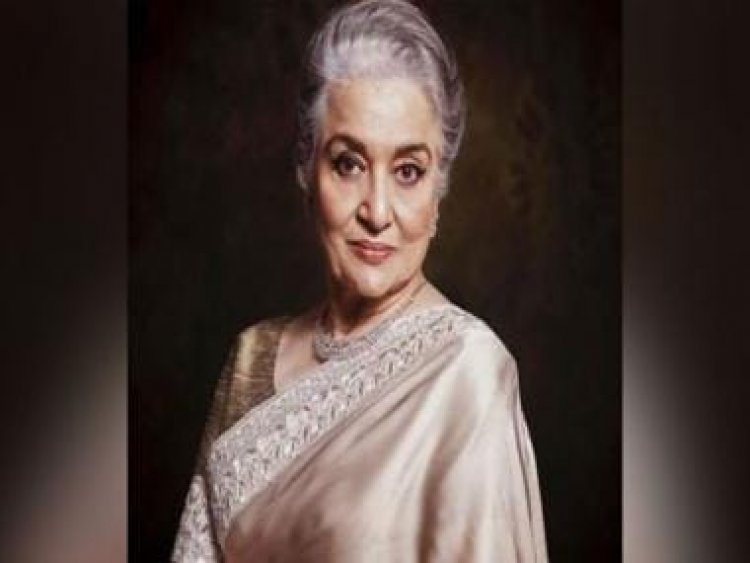Asha Parekh: Why conferring Dadasaheb Phalke award to her should be celebrated
Asha Parekh: Why conferring Dadasaheb Phalke award to her should be celebrated

The news of Asha Parekh, one of the biggest film stars to grace the silver screen, being conferred with the Dadasaheb Phalke award, India’s highest film honour, has generated mixed reactions. The announcement of Phalke has brought the long-retired actress under the spotlight. While there can be questions about the timing of the decision to honour the legendary actress, by comparison, many such as Jamuna or the iconic P Susheela and peerless S Janaki, deserve the Phalke. Be that as it may, the Phalke for Asha Parekh recognises the long overdue honour for one of the most influential actresses to grace Indian cinema.
Asha Parekh dominated Hindi cinema in the 1960s and early 1970s, unlike any other leading lady. A child prodigy discovered by the legendary Bimal Roy, who cast her at the age of ten in his films Maaand Baap Beti, after seeing her dance in a stage show, Asha Parekh had a short-lived career as a child artist. She was nearly cast opposite Rajendra Kumar in Goonj Uthi Shehnai. Still, she was passed over for Ameeta at the eleventh hour because the director, Vijay Bhatt, did not think she was ‘star material.’ Parekh proved him wrong only a few days later when the stalwart S Mukherji cast her in Dil Deke Dekho. The film was a resounding success, and it also started her long association with its director Nasir Husain, who would cast her in his subsequent five films on a trot.
It’s interesting to see how Asha Parekh was perhaps one of the earliest leading ladies who smashed the notion that for an actress to be successful in Hindi cinema, she had to form a commercially successful pair with the most prominent male star of the period. Unlike Nargis, Madhubala and Meena Kumari, who were forced by the trade to rely on their pairing with their male contemporaries Raj Kapoor and Dilip Kumar to be considered ‘stars.’ It was infrequent that they got a role that was author-backed in every sense of the word unless it was a romance (read casting of male stars) or the ‘women-centric’ film, a la Mother India,or Pakeezah. The other actress who managed to command significant roles was Nutun, with films such as Seema and Bandini. Even with such films to her name, Nutun did not have it easy.
The period when Asha Parekh came to the fore was one where the old guard of leading men was making space for the new ones. Many of the ‘new’ stars were, in fact, near veterans such as Rajendra Kumar, Shammi Kapoor and Sunil Dutt, who finally managed their moment in the sun as the likes of Dilip Kumar and Raj Kapoor had practically ceased to be the leading men. Parekh enjoyed great success with the other star from that pack, Dev Anand, and formed a great onscreen pair with Shammi Kapoor and Sunil Dutt. She also enjoyed great chemistry with Manoj Kumar, Dharmendra and Rajesh Khanna.
What is also interesting is how in the films that she did with new stars, such as Rajesh Khanna Baharon Ke Sapne (1967), Aan Milo Sajna (1970), and Kati Patang (1971), her role is far more defined than the ‘hero.’ Asha Parekh’s stardom can be gauged by how the leading man is incidental in some of the biggest hits such as Phir Wohi Dil Laya Hoon (1963), Pyar Ka Mausam (1969), and Caravan (1971).
Asha Parekh’s body of work included the biggest blockbusters and landmark films of the era: Jab Pyar Kissi Se Hota Hai (1960), Teesri Manzil (1966), Love in Tokyo (1966), Do Badan (1966), Aaye Din Bahar Ke (1966), Upkar (1967), Shikar (1968), Kanyadaan (1968), Sajan (1969), Pyar Ka Mausam (1969), Aya Sawan Jhoom Ke (1969), Mera Gaon Mera Desh (1971), Samdhi (1972), Heera (1973), Zakhmee (1975) and Main Tulsi Tere Angan Ki (1978). Still, she, along with Sadhana, the other doyen of the period, suddenly fell out of the reckoning with the advent of Amitabh Bachchan and younger stars such as Rishi Kapoor.
Asha Parekh featured in supporting roles through the 1980s, and here, too, she enjoyed immense success with Bulandi (1980), Kaalia (1981), Hathyar (1989) and Batwara (1989). She became a successful television director and served as the first woman chairperson of Central Board of Film Certification (Censor Board).
In the last few years, the Narendra Modi government has initiated several changes in how awards and honours operate in India. Each year, one gets to know about the lesser celebrated heroes whose lifelong work is getting acknowledged. The People’s Padma is one such example where for the first time, the real heroes are being honoured. Yes, one would love to see some other legends be given the honour they richly deserve and were overlooked for some reason, but that in no way should diminish Asha Parekh’s moment.
The writer is a film historian. Views expressed are personal.
Read all the Latest News, Trending News, Cricket News, Bollywood News,
India News and Entertainment News here. Follow us on Facebook, Twitter and Instagram.
What's Your Reaction?



























































